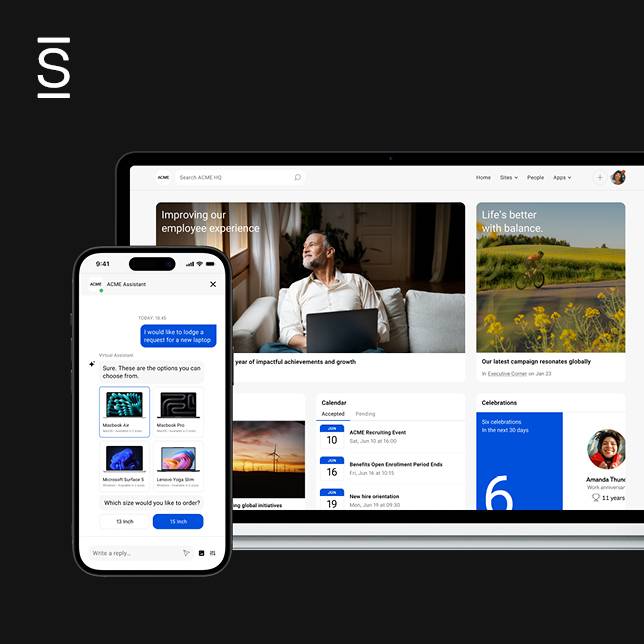Definition
Strategic communications is a specialized approach to distributing and receiving information. It means communicating the best message, through the correct channels, to the right people, at the right time and using feedback from this process to stay focused on company goals.
Explaining strategic communications
Communication is no longer merely a transmission of information. With the development of strategic communications systems, we now know that effective strategies for communications are viewed as a critical organizational management tool. With the onset of the digital revolution, there are now numerous ways to message and communicate, be it to one person or thousands. In a corporate environment, is it really worth all the effort to get that messaging just right? Is there a competitive advantage to targeted messaging? Yes, to both.
More and more in the workspaces of today, strategic communications, or the practice of using it in a strategic way to achieve goals, is being used for both internal and external communications.
Tailored, targeted information can be delivered in several ways, including verbally, digitally, in hard copy or others. We take an in-depth look at strategic communications so that you can get yours just right. Very simply put, things go better when employees and customers alike, by way of bespoke communications, know what’s going on.

The purpose of strategic communications
The purpose of strategic communications can be revealed by answering the following questions:
- Who do you need to reach with your message, and why?
- What will the content of your message be?
- How and when will you deliver this message?
- Which channels will you use?
Strategic communications processes help organizations effectively communicate and engage with key audiences by distributing compelling, consistent messages. The ideal outcome promotes the achievement of specific goals and objectives. It helps organizations establish and maintain strong relationships with key participants, builds trust in the workplace, and promotes transparency and accountability. Similarly, it can be used to guide internal communication advantageously within an organization.
The importance of strategic communications
Strategic communications is important because it helps organizations effectively communicate specifically targeted messages, goals and values to key audiences to achieve identified objectives. This can include building support for a particular policy or initiative, shaping public opinion, or managing a crisis.
With a 24/7 flood of correspondence out of every device we touch, how will a useful message be seen without strategic targeting? Likewise, within a company, how will a crucial message stand out in the sea of emails and memos?
Not only do effective strategic communications make messages visible to specific audiences, but they also build and sustain strong relationships with customers, promoting reliability, responsibility and accountability. Internally, clear, targeted messaging used to uphold and achieve company goals has a positive effect on employee engagement.
Strategic communications can also prevent the circulation of erroneous information. An effective plan empowers employees to work from and maintain a single source of truth, and this is imperative for consistent, reliable messaging.
Well-structured strategic communications, be they internal or external, make knowledge available within a company, or bring more knowledge into a company – and this allows better engagement and a competitive edge.

Creating a communication strategy plan
Because of the impact of strategic communications it’s vital to have a clear plan of action. This way, focus remains on the objectives, progress is monitored and valuable feedback is evaluated. Developing a communication strategy and plan lays the groundwork for fulfilling a purpose and allocating resources towards the greater goals. Because of rapid expansion of media and social media, it becomes increasingly important to avoid distraction and keep returning focus to the initial plan of action.
Define the company’s objectives
What are you trying to accomplish with a strategic communications plan? Once you know which goals you are trying to reach, planning is that much easier.
Audience
- Who and where is your audience?
- Are they internal or external, and are you dealing with a company as a whole or a team or department?
- If you are dealing with customers, are these all your customers, or just some of them?
- Who needs to hear your message to bring you closer to the company’s goal?
By understanding your audience thoroughly, you will know how to best communicate.
- What are their own objectives and requirements?
- What are their concerns, and where are their areas of resistance?
Audience feedback will provide insights to support the development of your plan. If there is more than one audience, then each will need its own plan.
Identify problems
Find the areas of need within your current strategic communications process, know the challenges and define the ideal outcome. This gives the plan a solid foundation, and a clear goal of its own.
Audit and timeline
Find out how much money the creation, implementation and monitoring of the plan will cost, and how long the process will take, and each step of that process. Has money already been spent on such a plan? If so, identify what has been spent, when, and where to establish areas needing more targeted funding, less, or where funding must be re-allocated.
Take care to create a detailed budget, and once approved, stick to it. At the same time, ensure the timeline includes each step of the process. A well-planned timeline and clear budget are mutually advantageous.
Stakeholders
Who needs to be involved, who will do the work? It’s important to appoint, or delegate to, the right people. For example, if there are problems with customer interactions, you might like to involve a customer services employee. Or, if there’s an issue around advertising, someone from marketing could be considered. Make sure their contributions have specific relevance to the identified problems. Make management and team members aware of what you are doing.
Messaging
It helps to brainstorm tactics around messaging in a collaborative environment. Once you have specific, relevant themes and topics for your message, identify how it will be best positioned and communicated. This can be through multimedia, advertising, PR, and others. A robust digital messaging platform will always provide the best vehicle for internal and external messaging.
Channels
There are numerous channels and platforms where your message can be communicated, and you will need to identify those most likely to be used by your target audience. Some of these include press releases, social media, radio and television advertisements, internal messages, interviews, white papers, and others.
Be aware that customers within older demographics might not be digitally savvy, so it won’t necessarily be effective to target them on Snapchat or TikTok. Younger customers tend to communicate entirely through their phones, so targeting this sector through a hardcopy newspaper would have less impact.
Monitor, measure and evaluate
Once your plan is implemented, you’ll need to regularly monitor progress, evaluate relevance, analyze feedback, measure impact, and be ready to define weak areas and adapt. Impressions and follower count on media platforms are meaningless if they don’t drive brand awareness or sales.
Use metrics to measure progress. Good communications within the team implementing the plan are essential, as these tasks must be carried out within the budget and timeline.
Pay attention to ethics
Not all strategic communications initiatives are positive. Some tread a fine line between honorable and otherwise. Some campaigns are formulated to promote negative propaganda, to strike fear into the heart of the opposition, or to sow targeted doubt among customers. Think carefully about ethics, and how choices will affect your own company culture, your company’s image and reputation, and your own. High principles send a powerful message to stakeholders. Always choose the high road.
See some examples of outcomes of successful strategic communications initiatives here, including P&G’s #LikeAGirl campaign, and how a life-saving lollipop touched the hearts of millions.
Remember, in order for strategic communications to be effective, senior leadership needs to be aligned and connected across the board to embrace communication tactics and core company messaging.

Harnessing the power of strategic communications
Well-positioned communications can transform the work experience. Within a company, good strategic communications is a valuable driver of employee engagement. This leads to heightened productivity, which in turn has a positive influence on the revenue stream. An engaged employee will likely remain with a company where they feel involved and valued, and this boosts employee retention rates.
An effective, internal strategic communications process also provides the potential for steady, consistent expression of a company’s brand or mission and provides the tools for employees to do this. When leaders and employees communicate around company goals, this exposes the best thinking.
In a collaborative workspace, where quality communication flows freely, employees feel engaged, valued, and secure. Externally, customer satisfaction is heightened by tailored communications and services provided by an engaged employee.
Quality communication is the backbone of a healthy company culture. Employees are engaged, productivity is increased, and employee turnover reduced. All these contribute to a healthy bottom line.
To utilize the power that effective, strategic communications bring to a company, intranets are key. These play a large part in helping to engage employees across the organization regardless of their role, department or location.

Creative communication through videos, contests, polls, social posts and others, encourages two-way communication and engagement. By utilizing a intranet that personalizes content to its recipient, a company’s strategic communication plan can increase employee engagement, and this ultimately contributes to the company’s success.
Conclusion
A well-planned strategic communications plan is a critical part of a company’s success. It is more than likely that such a plan will need to be tested a few ways before the road ahead is clear. Once in place, you’ll be able to monitor daily, weekly, monthly developments around targeted communications and use this feedback to adapt and grow to impact progress.
A modern intranet such as Simpplr can assist in your strategic internal communications plan’s success. With AI-backed personalization and powerful analytics to help you measure the success of your messaging and ensure clear communications and engagement for employees.

Watch a 5-minute demo
See how the Simpplr employee experience platform connects, engages and empowers your workforce.
- #1 Leader in the Gartner Magic Quadrant™
- 90%+ Employee adoption rate






